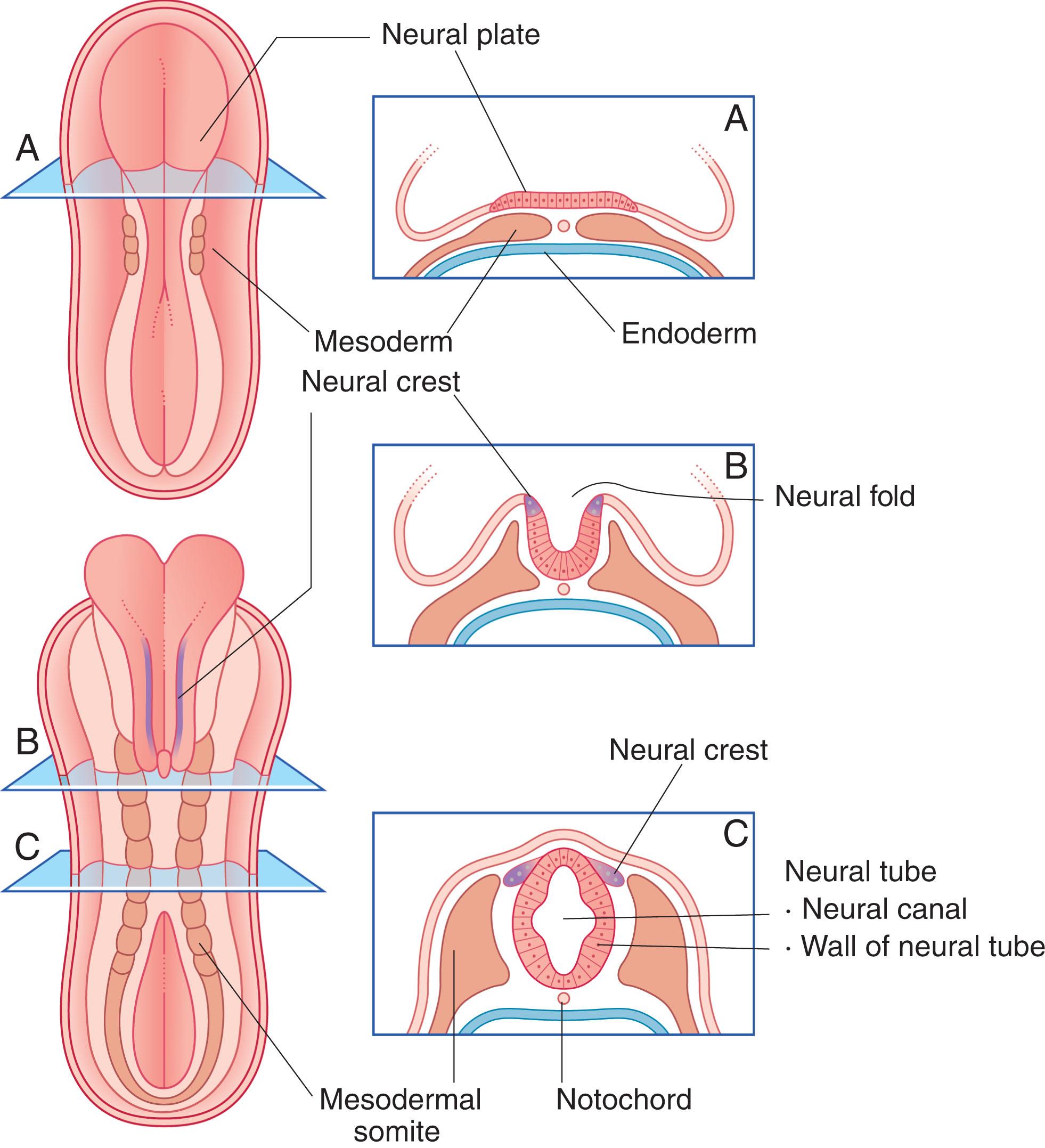Physical Address
304 North Cardinal St.
Dorchester Center, MA 02124
This chapter aims to give you sufficient insight into the embryologic development of the brain and spinal cord to account for the arrangement of structures in the mature nervous system. If not already familiar with adult brain anatomy, we suggest you read this chapter again following your study of Chapter 2, Chapter 3 .
For descriptive purposes, the embryo is in the prone (face-down) position, whereby the terms ventral and dorsal correspond to the adult anterior and posterior , and rostral and caudal correspond to superior and inferior .
The entire nervous system originates from the neural plate , which arises from an ectodermal thickening of the floor of the amniotic sac ( Fig. 1.1 ). During the third week after fertilisation, the neural plate forms paired neural folds , which unite to create the neural tube and neural canal . Union of the folds commences in the future neck region of the embryo and proceeds rostrally and caudally. The open cranial and caudal ends of the neural tube, the neuropores , are closed off before the end of the fourth week. The process of formation of the neural tube from the ectoderm is known as neurulation .

Cells at the edge of each neural fold escape from the line of union and form the neural crest alongside the tube. Cell types derived from the neural crest include spinal and autonomic ganglion cells, melanocytes, and the Schwann cells of peripheral nerves.
Become a Clinical Tree membership for Full access and enjoy Unlimited articles
If you are a member. Log in here